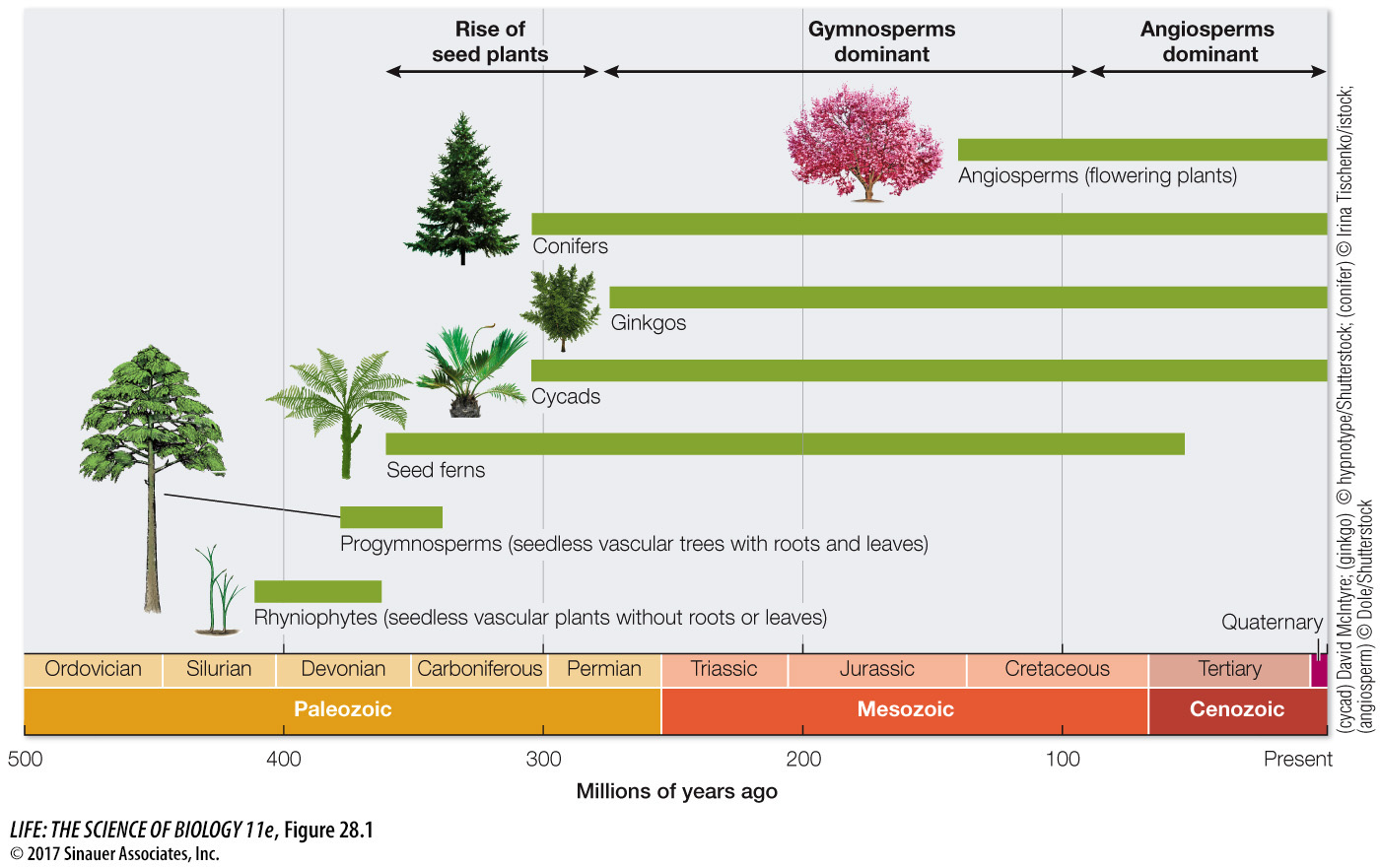key concept
28.1
Pollen, Seeds, and Wood Contributed to the Success of Seed Plants
key concept
28.1
Pollen, Seeds, and Wood Contributed to the Success of Seed Plants
By the late Devonian period, more than 360 million years ago, Earth was home to a great variety of land plants, many of which we discussed in Chapter 27. The land plants shared the hot, humid terrestrial environment with insects, spiders, centipedes, and early tetrapods. These plants and animals evolved together, each acting as agents of natural selection on the other.
focus your learning
Seed plants are heterosporous.
The seed is a well-
protected resting stage. Secondary growth increases the diameter of stems and roots in many seed plants.
In the Devonian, a new innovation appeared when some plants developed extensively thickened woody stems. Among the first plants with this adaptation were seedless vascular plants called progymnosperms, all species of which are now extinct. The progymnosperms included many large trees.
Another innovation, the seed, arose in the seed plants. Seeds provide a secure and lasting structure that protects the dormant stage of the embryo. A plant embryo may safely wait within its seed (in some cases for many years, or even centuries) until conditions are right for germination.
The earliest fossil evidence of seed plants is found in late Devonian rocks. Like the progymnosperms, these now-
